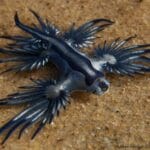Get ready for a spicy adventure! We’re diving deep into the world of the Jolokia Naga chili pepper—a contender for the hottest pepper on the planet, capable of melting steel beams… well, maybe not literally. This isn’t some mild jalapeño; this is the fire-breathing dragon of the chili world.
Unmasking the Ghost Pepper: Heat, Flavor, and History
The Jolokia Naga, often called the Ghost Pepper, is infamous. Clocking in at over a million Scoville units—the scale used to measure a pepper’s spiciness—it puts a humble jalapeño (2,500-8,000 units) to shame. But there’s more to this pepper than just raw heat. Imagine bursts of fruity sweetness intertwined with a smoky depth, adding layers of deliciousness to any dish brave enough to handle it.
Originating from Northeast India, the Jolokia Naga has been a staple ingredient in their cuisine for centuries, adding its signature kick to curries, pickles, and chutneys. But its story takes a wild turn when you learn that its powerful heat caught the attention of India’s Defence Research and Development Organization for potential use in non-lethal weapons. Who knew a pepper could be so intimidating?
Naga Jolokia vs. Bhut Jolokia: Unraveling the Chili Conundrum
The terms “Bhut Jolokia” and “Naga Jolokia” are often used interchangeably, causing confusion among chili enthusiasts. While both refer to extremely hot peppers within the Capsicum chinense species, some experts suggest there might be subtle differences.
- Regional Roots: “Bhut Jolokia,” meaning “ghost pepper” in Assamese, is primarily used in India, particularly in its northeast region of origin. “Naga” references the Naga people of that region and is more common globally.
- Flavor Nuances: While anecdotal, some chili lovers describe Bhut Jolokia as having a more pronounced fruity, citrusy heat, while Naga varieties might lean towards earthy and smoky with a delayed but potent spice wave.
Ongoing research continues to unravel the complexities of chili pepper genetics. Factors like growing conditions and individual plant variations can influence heat and flavor, making it difficult to draw definitive lines.
Feeling the Burn: Quantifying the Jolokia Naga’s Heat
We’ve established that the Naga Jolokia is seriously spicy, but how spicy are we talking, really? Imagine the heat of a jalapeño, now multiply that by a staggering 400 times—that’s the fiery fury you’re dealing with!
The Scoville Heat Unit (SHU) scale gives the Naga Jolokia a rating of 800,000 to over 1 million SHUs. This intense heat comes from capsaicin, the compound that makes all chili peppers spicy. If jalapeños are like a sparkler, the Naga Jolokia is a full-blown fireworks show in your mouth.
Can You Grow a Ghost Pepper in the UK? Bringing the Tropics Home
Think growing one of the world’s hottest peppers in the UK is impossible? Think again! With a bit of dedication and these tips, you can cultivate these fiery beauties:
Recreating the Tropics: Essential Tips for UK Success
- Start Strong: Source high-quality ghost chili seeds online or from a specialized nursery.
- Indoor Nursery: Sow seeds indoors in late winter/early spring using a seed tray and seedling compost. Aim for a consistent temperature around 25°C (77°F), using a propagator for optimal results.
- Transplanting Time: Once seedlings develop a few sets of leaves, transplant them into individual pots with well-draining potting mix.
- Location, Location, Location: You can continue growing indoors in a sunny south-facing spot or a greenhouse. If planting outdoors, wait until after the last frost (around May/June) and choose the sunniest location in your garden.
- Nourishment is Key: Water well, especially during hot periods, but avoid overwatering. Feed every few weeks with a balanced liquid fertilizer.
- Pest Patrol: Regularly inspect for pests like aphids or spider mites. Numerous natural and organic pest control options are available if needed.
- Reap the Rewards: Harvest your ghost chilies when they turn a deep red and feel firm, typically around 90 days after planting.
- Spice Up Your Life! Incorporate your homegrown ghost chilies into your dishes! Remember, a tiny amount goes a long way. You can also dry your chilies to preserve them.
UK Ghost Chili Growing Pro-Tips
- Light it Up: Supplement natural light with a grow light if your indoor space isn’t very sunny.
- Stay Warm: Maintain a consistently warm environment, especially during early growth stages.
- Water Wisely: Water deeply when the soil is dry to the touch, but avoid waterlogged soil.
- Feed the Fire: Don’t skip those regular fertilizer boosts.
- Pest Prevention: Regularly check for pests, particularly under leaves.
The Jolokia Naga: A Pepper of Paradox
The Jolokia Naga is more than just a scorching hot pepper—it’s a culinary marvel, a cultural icon, and even a potential tool for defense. It sparks conversations about ethical boundaries and highlights the incredible power found in nature. As we continue to explore the possibilities of this fiery wonder, it’s crucial to appreciate its culinary magic while acknowledging the potential consequences of its potency.
Embark on more fascinating journeys into the world of intriguing organisms:
- Explore the challenges posed by the Khapra beetle, a notorious pest in stored products.
- Discover the extraordinary tale of the Leucistic Axolotl, a mesmerizing creature with a unique genetic trait.














